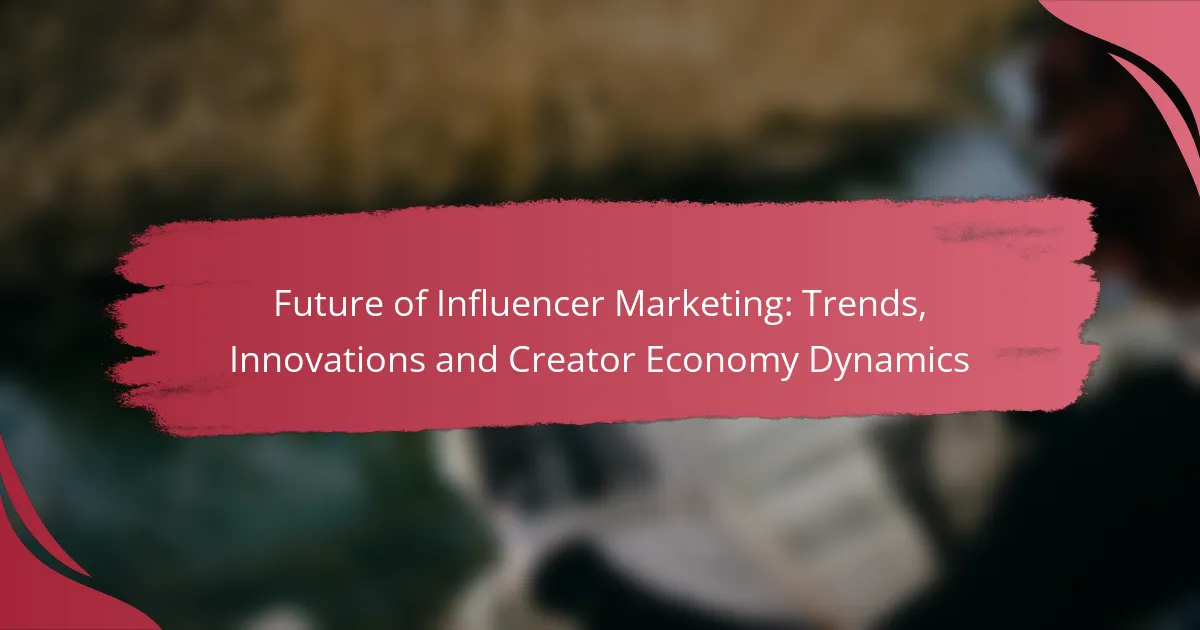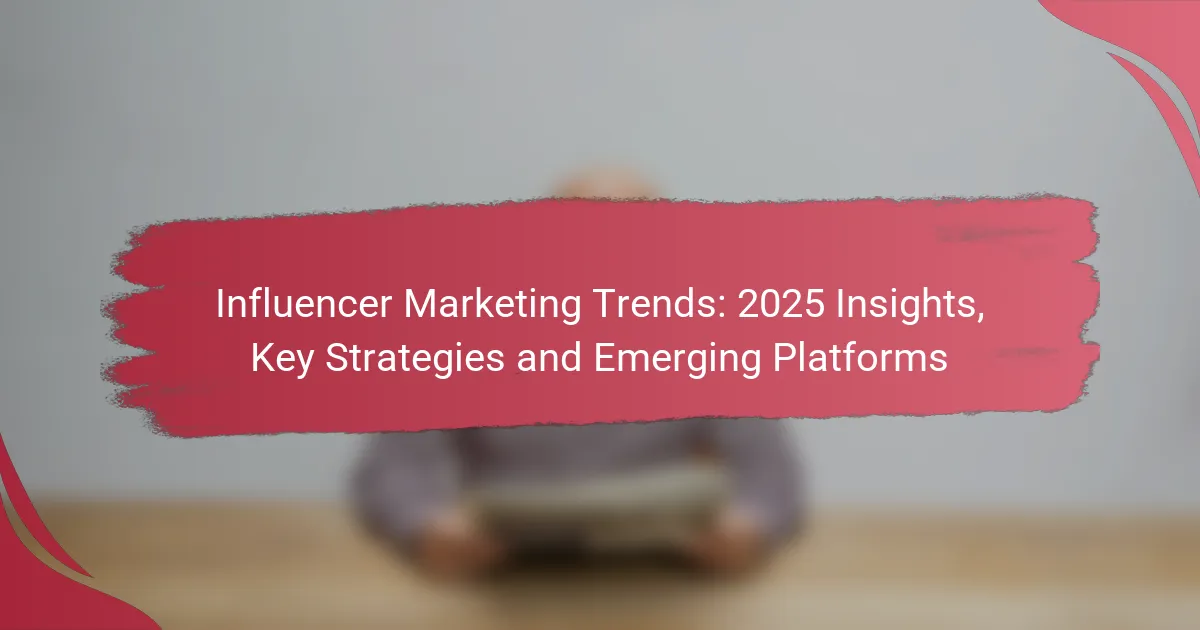The future of influencer marketing is shaped by key trends such as the rise of micro-influencers, a focus on authenticity, and the integration of AI technologies. As brands adapt to this evolving landscape, they are leveraging data and diversifying channels to enhance engagement. Innovations like blockchain and augmented reality are further transforming the creator economy, offering new opportunities for transparency and monetization.
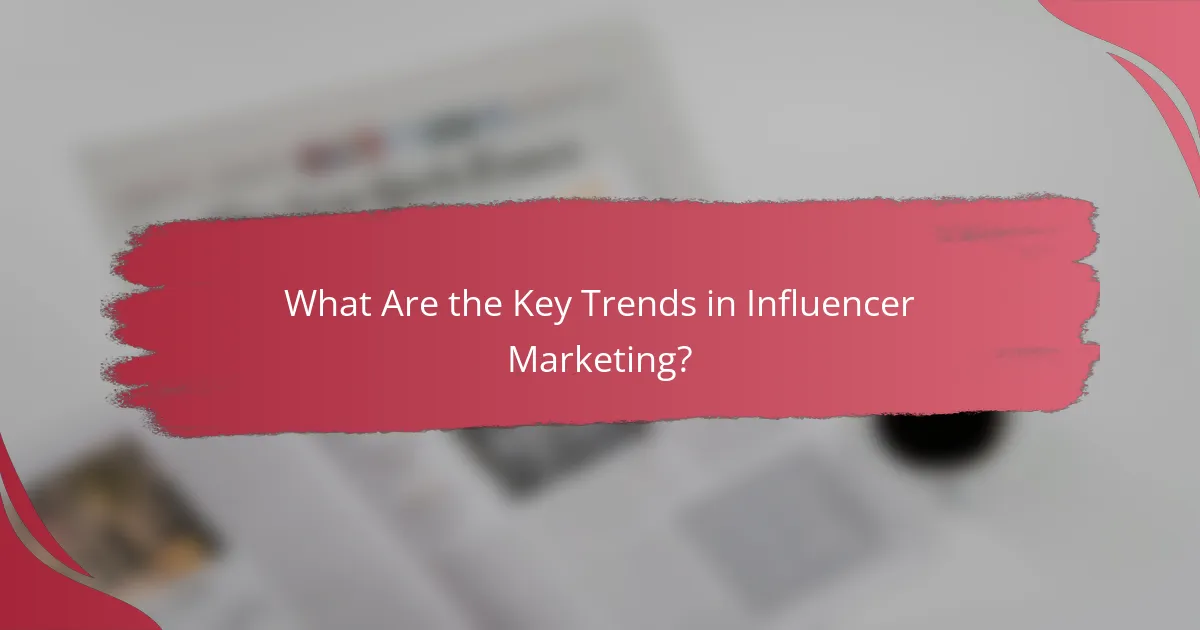
What Are the Key Trends in Influencer Marketing?
Key trends in influencer marketing include the rise of micro-influencers, a growing emphasis on authenticity, the integration of AI technologies, a shift towards long-term partnerships, and the increasing popularity of video content. These trends reflect the evolving dynamics of the creator economy and the need for brands to adapt their strategies to engage effectively with audiences.
Rise of Micro-Influencers
Micro-influencers, typically defined as individuals with a follower count ranging from 1,000 to 100,000, are gaining traction in influencer marketing. Brands are recognizing that these influencers often have higher engagement rates and more targeted audiences compared to larger influencers. Collaborating with micro-influencers can lead to more authentic connections and cost-effective campaigns.
For brands, leveraging micro-influencers can mean accessing niche markets and fostering community-driven marketing. Companies should consider identifying micro-influencers who align closely with their brand values and target demographics for maximum impact.
Increased Focus on Authenticity
Authenticity has become a cornerstone of successful influencer marketing. Consumers are increasingly discerning and prefer genuine content over overly polished advertisements. Brands are now prioritizing partnerships with influencers who can convey their messages in a relatable and honest manner.
To enhance authenticity, brands should encourage influencers to share personal stories and experiences related to their products. This approach not only builds trust but also resonates more deeply with audiences, leading to higher conversion rates.
Integration of AI in Campaigns
The integration of artificial intelligence (AI) in influencer marketing is transforming how brands identify and engage with creators. AI tools can analyze audience demographics, engagement metrics, and content performance, helping brands make data-driven decisions. This technology streamlines the influencer selection process and optimizes campaign strategies.
Brands should consider using AI analytics to track campaign performance in real-time, allowing for adjustments that enhance effectiveness. Additionally, AI can assist in predicting trends and consumer behavior, enabling brands to stay ahead in a competitive landscape.
Shift to Long-Term Partnerships
There is a noticeable shift towards establishing long-term partnerships between brands and influencers. Rather than one-off collaborations, brands are seeking to build ongoing relationships that foster deeper connections with audiences. This strategy allows influencers to create more cohesive narratives around products and brands.
Brands should approach long-term partnerships with clear expectations and mutual goals. Regular communication and collaboration can enhance the authenticity of the influencer’s content and ensure alignment with the brand’s evolving messaging.
Growth of Video Content
Video content is rapidly becoming the preferred medium for influencer marketing, driven by platforms like TikTok, Instagram Reels, and YouTube. Video allows for dynamic storytelling and can capture audience attention more effectively than static images. Brands are increasingly investing in video campaigns to leverage this trend.
To maximize the impact of video content, brands should focus on creating engaging, short-form videos that highlight product benefits and resonate with viewers. Collaborating with influencers who excel in video production can enhance the quality and reach of these campaigns.
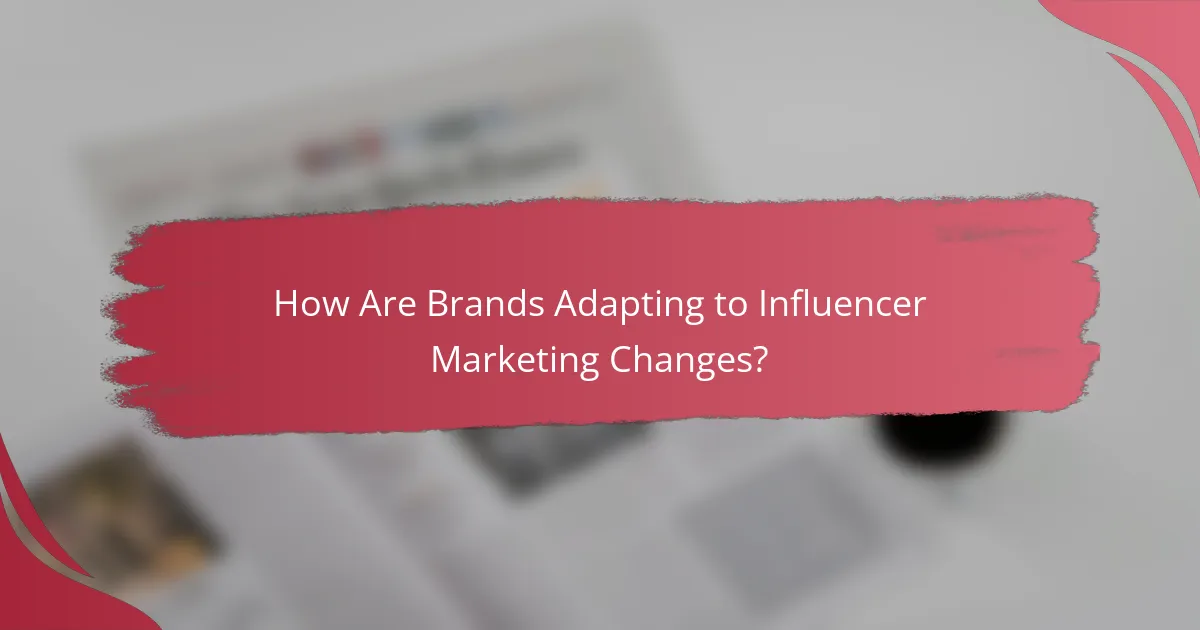
How Are Brands Adapting to Influencer Marketing Changes?
Brands are increasingly adjusting their strategies to keep pace with the evolving landscape of influencer marketing. This involves leveraging data, diversifying channels, and embracing user-generated content to enhance engagement and authenticity.
Utilizing Data Analytics
Data analytics plays a crucial role in how brands adapt to changes in influencer marketing. By analyzing metrics such as engagement rates, audience demographics, and conversion rates, brands can identify which influencers resonate best with their target market.
Tools like Google Analytics and social media insights provide valuable information that helps brands refine their influencer partnerships. For instance, brands can track the performance of campaigns in real-time and make adjustments to optimize results.
Implementing Multi-Channel Strategies
Brands are increasingly adopting multi-channel strategies to reach audiences across various platforms. This approach allows them to maximize visibility and engagement by collaborating with influencers on different social media sites, such as Instagram, TikTok, and YouTube.
For example, a brand might launch a campaign that includes Instagram posts, TikTok challenges, and YouTube reviews, ensuring that they cater to diverse audience preferences. This strategy not only broadens reach but also enhances brand storytelling through varied content formats.
Leveraging User-Generated Content
User-generated content (UGC) is becoming a vital component of influencer marketing strategies. Brands encourage their customers to create content featuring their products, which can then be shared across social media platforms.
By showcasing UGC, brands can build trust and authenticity, as potential customers often relate more to real users than to polished advertisements. For instance, a clothing brand might feature customer photos on its website and social media, creating a community feel while promoting its products.
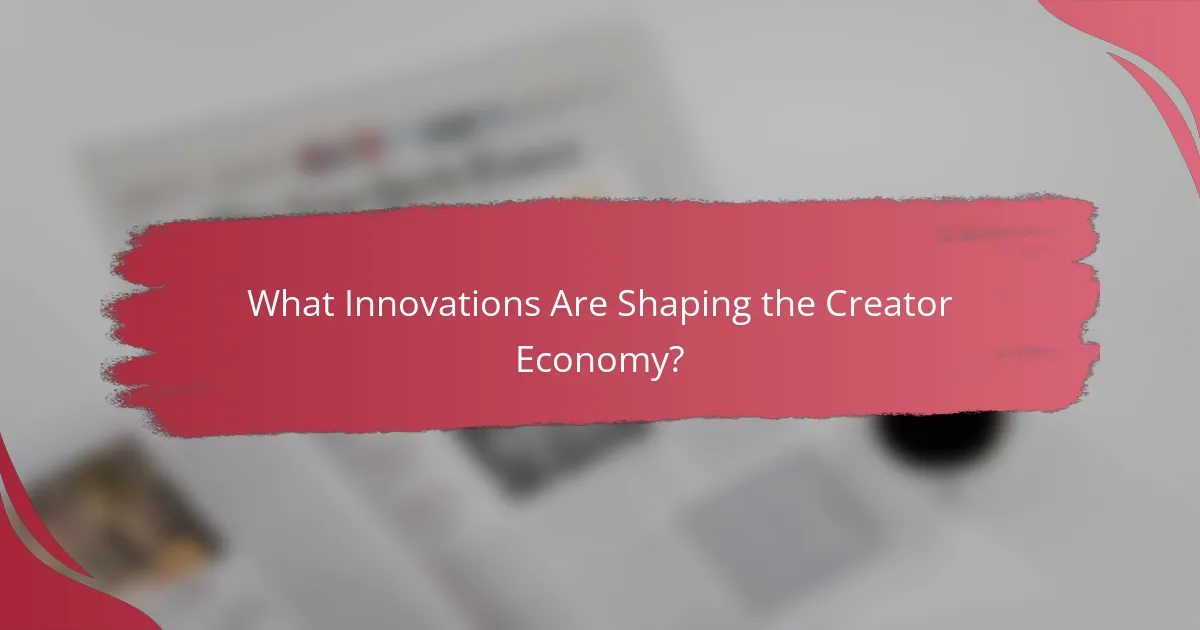
What Innovations Are Shaping the Creator Economy?
Innovations such as blockchain technology, augmented reality, and direct monetization platforms are significantly transforming the creator economy. These advancements enhance transparency, engagement, and revenue opportunities for content creators and brands alike.
Blockchain for Transparency
Blockchain technology is revolutionizing the creator economy by providing transparent and secure transactions. It allows creators to verify the authenticity of their content and ensures that they receive fair compensation for their work.
For example, platforms using blockchain can track ownership and usage rights, minimizing disputes over intellectual property. Creators can also utilize smart contracts to automate payment processes, ensuring timely remuneration based on predefined conditions.
Augmented Reality Experiences
Augmented reality (AR) is enhancing the way creators engage with their audiences by offering immersive experiences. This technology allows users to interact with digital content in real-world settings, making marketing campaigns more engaging and memorable.
Brands are increasingly collaborating with influencers to create AR filters or virtual try-on experiences, which can lead to higher conversion rates. For instance, beauty brands often leverage AR to let customers visualize how products will look before purchasing, driving sales and enhancing customer satisfaction.
Direct Monetization Platforms
Direct monetization platforms are emerging as key players in the creator economy, enabling content creators to earn revenue directly from their audience. These platforms often include subscription models, pay-per-view content, and merchandise sales, which provide creators with more control over their income streams.
Examples of such platforms include Patreon and [censured], where creators can set subscription fees and offer exclusive content to their followers. This model allows creators to build a loyal community while generating a sustainable income, bypassing traditional advertising revenue models.
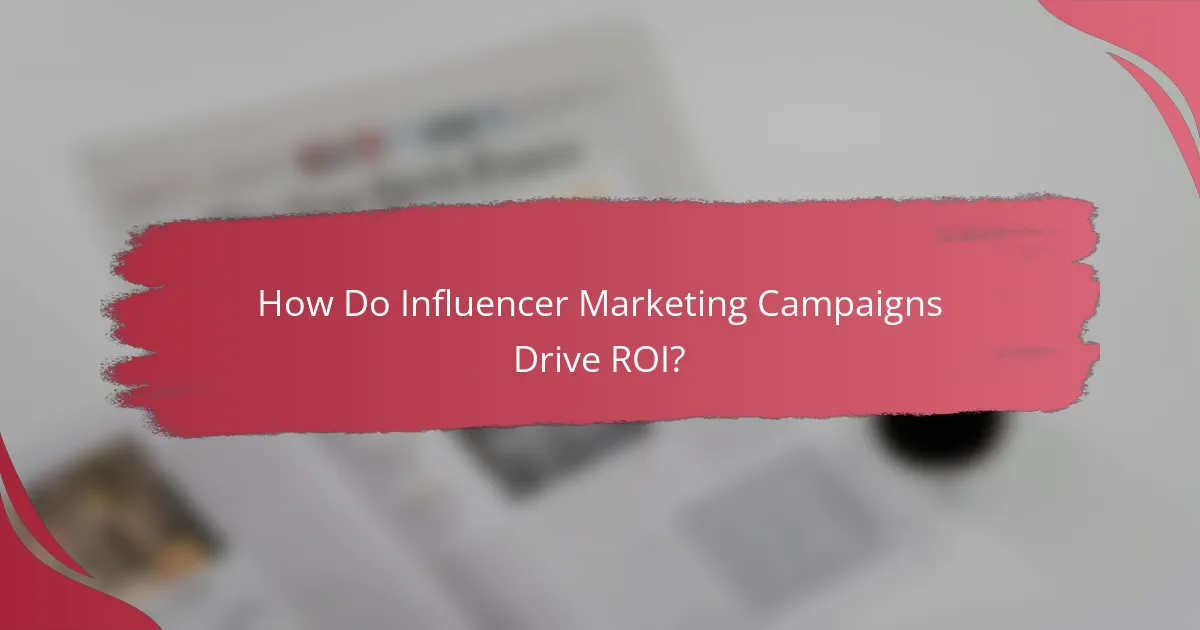
How Do Influencer Marketing Campaigns Drive ROI?
Influencer marketing campaigns drive ROI by leveraging the reach and credibility of influencers to enhance brand visibility and engagement. By connecting with targeted audiences through trusted voices, brands can achieve measurable results in sales and customer loyalty.
Measuring Engagement Rates
Engagement rates are critical for assessing the effectiveness of influencer marketing campaigns. These rates typically include likes, shares, comments, and overall interactions relative to the audience size. A good engagement rate often falls between 1% to 5%, depending on the platform and industry.
To measure engagement, brands can use tools like social media analytics or influencer marketing platforms. Regularly tracking these metrics helps identify which content resonates most with audiences and informs future campaign strategies.
Tracking Conversion Metrics
Conversion metrics indicate how well an influencer campaign drives desired actions, such as purchases or sign-ups. Common metrics include click-through rates (CTR) and return on ad spend (ROAS). A typical CTR for influencer links can range from 2% to 10%, varying by niche and audience engagement.
Utilizing tracking links or unique discount codes can provide clear insights into conversions. Brands should analyze these metrics post-campaign to refine their strategies and improve future ROI.
Utilizing Affiliate Marketing
Affiliate marketing enhances influencer campaigns by allowing influencers to earn commissions on sales generated through their promotions. This model aligns the interests of both brands and influencers, motivating them to drive higher conversions.
Brands can implement affiliate programs using platforms like ShareASale or Rakuten. Offering competitive commission rates—typically between 5% to 20%—can attract more influencers to participate and promote products effectively.
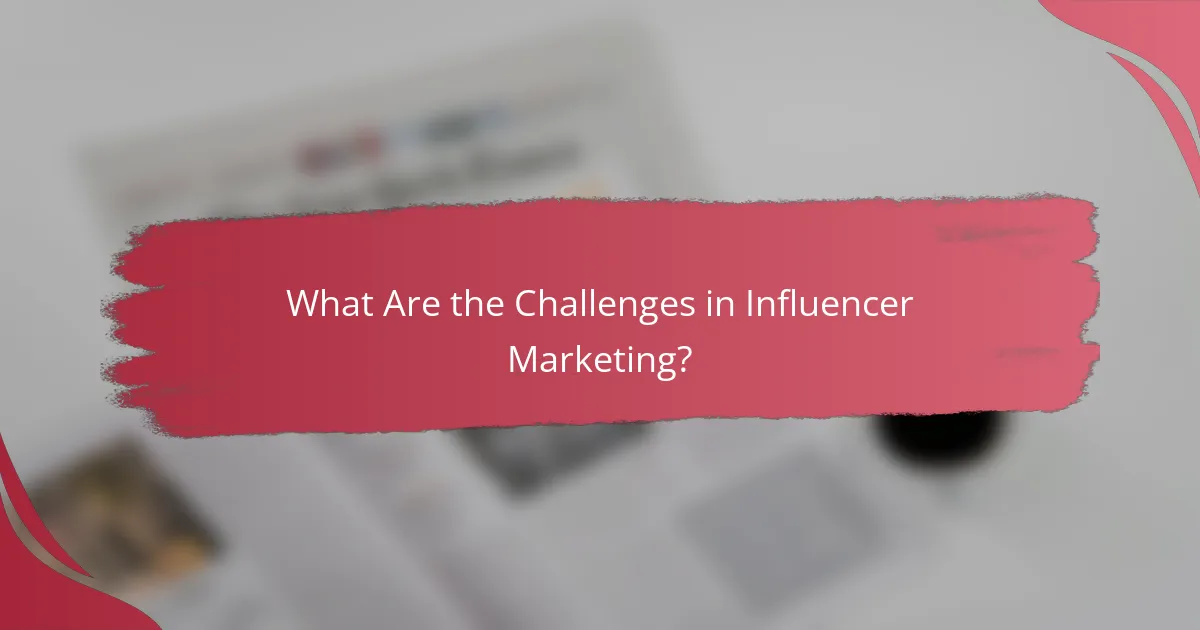
What Are the Challenges in Influencer Marketing?
Influencer marketing faces several challenges that can impact its effectiveness and credibility. Key issues include managing brand safety, navigating regulatory compliance, and addressing audience saturation, each requiring careful consideration and strategic planning.
Managing Brand Safety
Brand safety involves ensuring that marketing messages are placed in appropriate contexts that align with a brand’s values. This can be challenging as influencers may post content that is controversial or misaligned with a brand’s image. Brands should conduct thorough research on influencers and their past content to mitigate risks.
Establishing clear guidelines for content and communication can help maintain brand integrity. Regular monitoring of influencer posts and audience reactions is essential to quickly address any potential issues.
Navigating Regulatory Compliance
Influencer marketing is subject to various regulations, particularly regarding transparency and disclosure. In many countries, influencers are required to disclose paid partnerships clearly to avoid misleading consumers. Brands must ensure that their influencers comply with these regulations to avoid legal repercussions.
Staying updated on local laws, such as the Federal Trade Commission (FTC) guidelines in the United States, is crucial. Brands should provide influencers with clear instructions on how to disclose partnerships effectively, such as using hashtags like #ad or #sponsored.
Addressing Audience Saturation
As influencer marketing grows, audiences may become saturated with promotional content, leading to decreased engagement. Brands need to differentiate their campaigns by focusing on authenticity and storytelling to capture audience interest. Collaborating with niche influencers can also help reach targeted segments effectively.
Regularly refreshing content strategies and exploring innovative formats, such as live streams or interactive posts, can keep audiences engaged. Monitoring engagement metrics can help brands identify when saturation occurs and adjust their approach accordingly.
